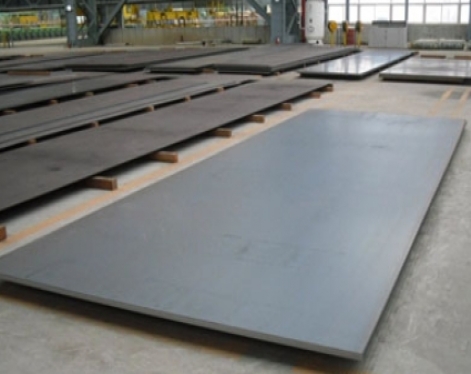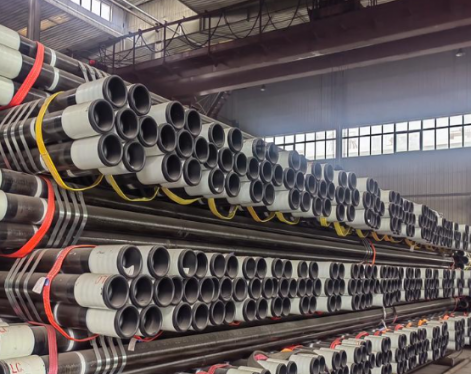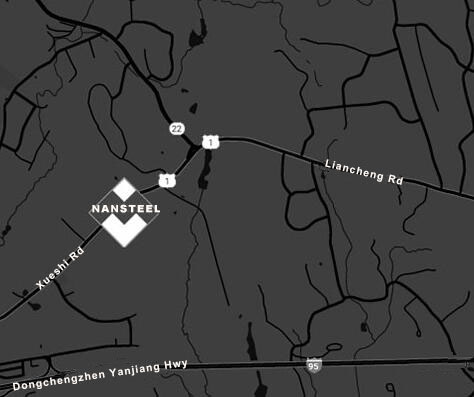Carbon steel plates are extensively utilized in construction, engineering, shipbuilding, and the fabrication of pressure vessels thanks to their high strength, cost-effectiveness, and wide-ranging applicability. A clear understanding of their specifications is essential to ensure the right material is chosen for a given application.
Types of carbon steel plates
Carbon steel plates are classified based on carbon content:
Low Carbon Steel (Mild Steel): Contains less than 0.3% carbon. Easy to weld and form, commonly used in structural applications.
Medium Carbon Steel: Contains 0.3%–0.6% carbon. Offers greater strength and hardness, suitable for machine components.
High Carbon Steel: Contains more than 0.6% carbon. Known for hardness and wear resistance, used in tools and cutting equipment.

Common standards and grades of carbon steel plates
Carbon steel plate specifications vary by international standards. Popular standards include:
ASTM A36 – General structural plate with good weldability and moderate strength.
ASTM A516 Grade 70 – Pressure vessel quality steel with excellent notch toughness.
ASTM A572 Grade 50 – High-strength, low-alloy steel for structural purposes.
EN 10025 S235/S355 – European standards for structural steel with good machinability.
GB Q235 / Q345 – Chinese standard grades used in construction and heavy equipment.
These grades differ in mechanical properties, such as yield strength, tensile strength, and elongation.
Dimensions and surface conditions of carbon steel plates
Carbon steel plates are available in a wide range of dimensions to accommodate diverse industrial and structural applications.
Thickness: Typically ranges from 3mm to over 100mm, depending on the grade and end use. Thinner plates are often used in automotive and construction projects, while thicker plates are suited for heavy-duty applications like pressure vessels, cranes, and ship hulls.
Width and Length: Standard plate sizes include 4 feet × 8 feet (1219mm × 2438mm) and 5 feet × 10 feet (1524mm × 3048mm). However, plates can also be cut to custom dimensions to meet specific design requirements, minimizing material waste and fabrication time.
Surface Conditions: The surface finish of carbon steel plates can vary based on production methods and intended use:
Hot-Rolled (Mill Finish): Features a scaled surface and is most commonly used for general structural purposes.
Pickled and Oiled (P&O): The scale is removed using an acid bath, and a protective oil coating is applied to prevent rust. This finish provides a smoother surface and is ideal for further processing such as painting or welding.
Shot-Blasted: The surface is cleaned using abrasive blasting, improving adhesion for coatings and providing a cleaner appearance, commonly used in the fabrication of tanks or offshore structures.
Applications by Grade
ASTM A36: Ideal for bridges, buildings, and general steel structures.
A516 Gr.70: Used in boilers, tanks, and pressure vessels.
Q345 / S355: Suited for heavy machinery, cranes, and welded structures.
Read more: Precautions for Welding Carbon Steel Plates
Types of carbon steel plates
Carbon steel plates are classified based on carbon content:
Low Carbon Steel (Mild Steel): Contains less than 0.3% carbon. Easy to weld and form, commonly used in structural applications.
Medium Carbon Steel: Contains 0.3%–0.6% carbon. Offers greater strength and hardness, suitable for machine components.
High Carbon Steel: Contains more than 0.6% carbon. Known for hardness and wear resistance, used in tools and cutting equipment.

Common standards and grades of carbon steel plates
Carbon steel plate specifications vary by international standards. Popular standards include:
ASTM A36 – General structural plate with good weldability and moderate strength.
ASTM A516 Grade 70 – Pressure vessel quality steel with excellent notch toughness.
ASTM A572 Grade 50 – High-strength, low-alloy steel for structural purposes.
EN 10025 S235/S355 – European standards for structural steel with good machinability.
GB Q235 / Q345 – Chinese standard grades used in construction and heavy equipment.
These grades differ in mechanical properties, such as yield strength, tensile strength, and elongation.
Dimensions and surface conditions of carbon steel plates
Carbon steel plates are available in a wide range of dimensions to accommodate diverse industrial and structural applications.
Thickness: Typically ranges from 3mm to over 100mm, depending on the grade and end use. Thinner plates are often used in automotive and construction projects, while thicker plates are suited for heavy-duty applications like pressure vessels, cranes, and ship hulls.
Width and Length: Standard plate sizes include 4 feet × 8 feet (1219mm × 2438mm) and 5 feet × 10 feet (1524mm × 3048mm). However, plates can also be cut to custom dimensions to meet specific design requirements, minimizing material waste and fabrication time.
Surface Conditions: The surface finish of carbon steel plates can vary based on production methods and intended use:
Hot-Rolled (Mill Finish): Features a scaled surface and is most commonly used for general structural purposes.
Pickled and Oiled (P&O): The scale is removed using an acid bath, and a protective oil coating is applied to prevent rust. This finish provides a smoother surface and is ideal for further processing such as painting or welding.
Shot-Blasted: The surface is cleaned using abrasive blasting, improving adhesion for coatings and providing a cleaner appearance, commonly used in the fabrication of tanks or offshore structures.
Applications by Grade
ASTM A36: Ideal for bridges, buildings, and general steel structures.
A516 Gr.70: Used in boilers, tanks, and pressure vessels.
Q345 / S355: Suited for heavy machinery, cranes, and welded structures.
Read more: Precautions for Welding Carbon Steel Plates
Previous:ERW Pipe VS. CEW Pipe









